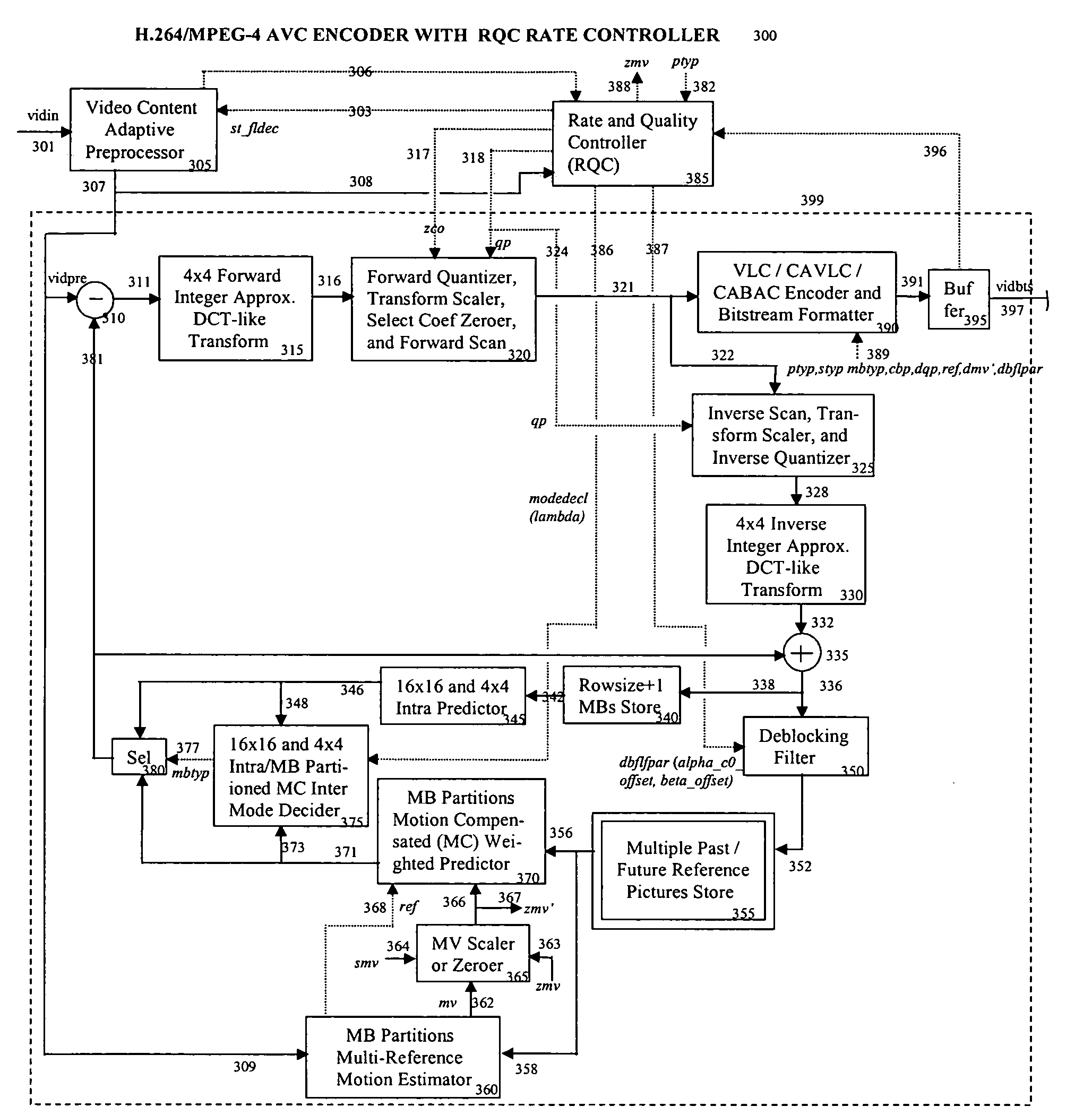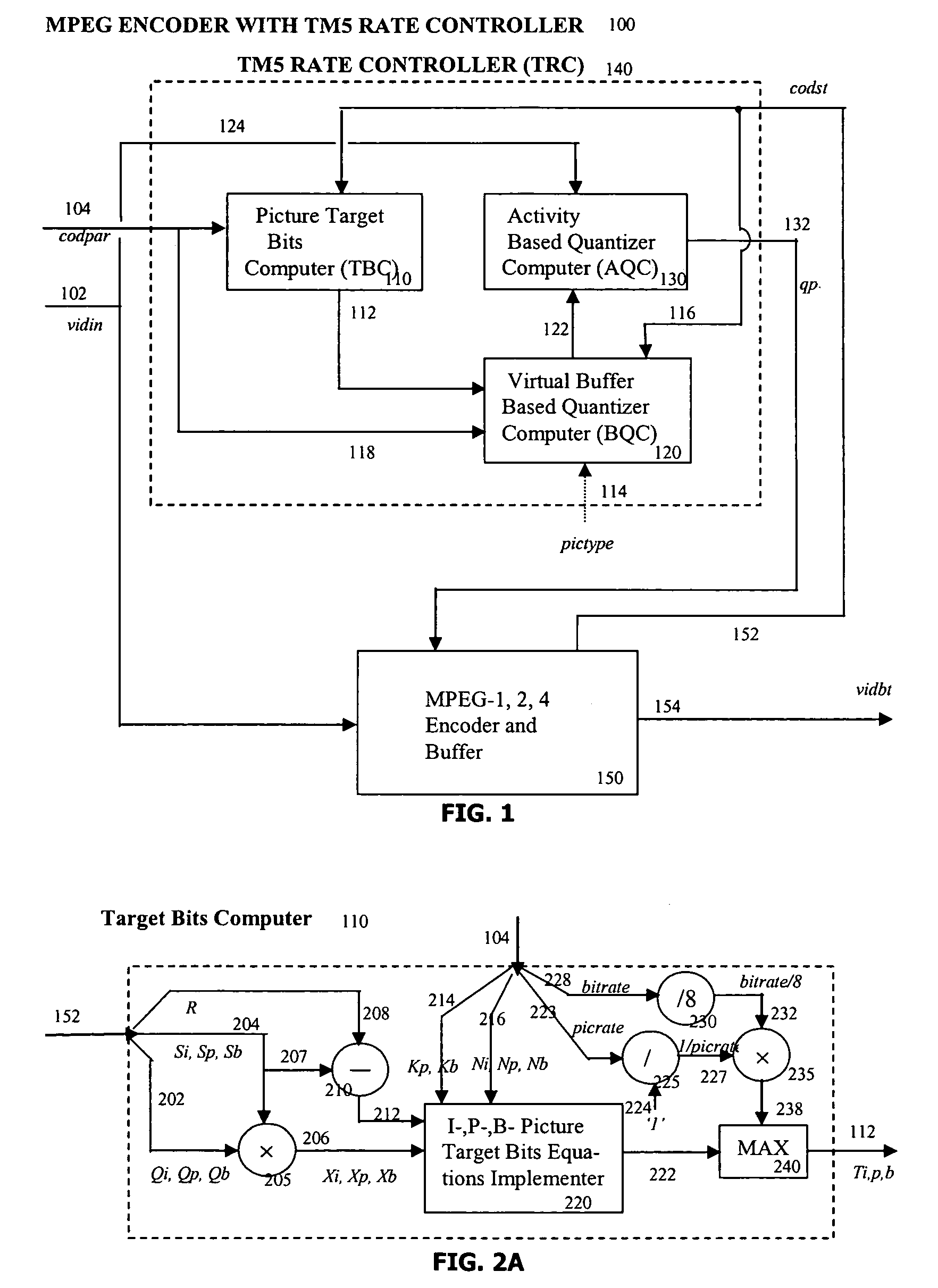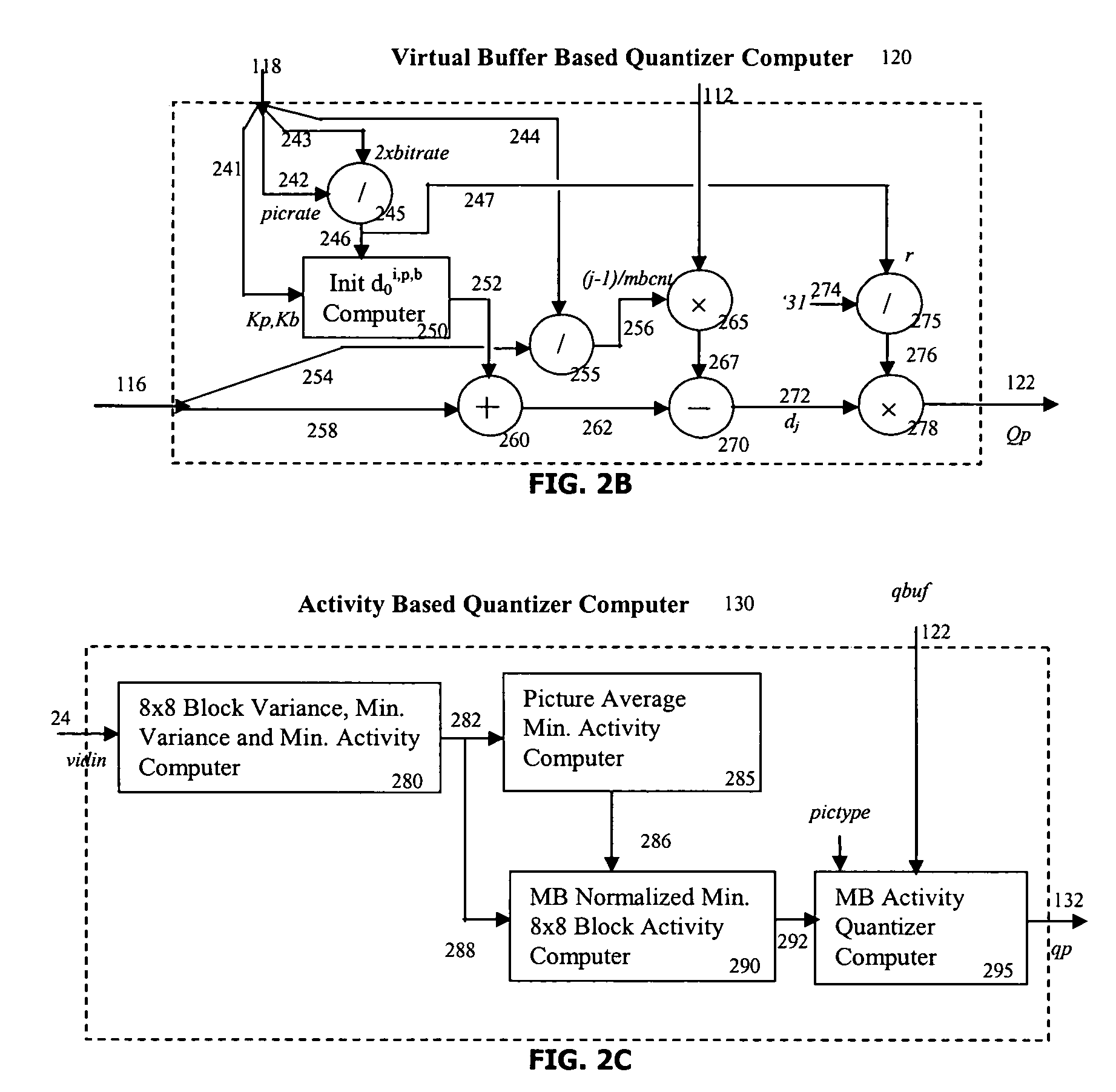Target bitrate estimator, picture activity and buffer management in rate control for video coder
- Summary
- Abstract
- Description
- Claims
- Application Information
AI Technical Summary
Problems solved by technology
Method used
Image
Examples
Embodiment Construction
[0069]Embodiments of the present invention provide a rate and quality controller (RQC) for use in video coding applications. According to an embodiment, the RQC may control coding rates applicable to I-, P- and B-frames in a manner that maintains a desired coding rate at acceptable quality. The RQC may set coding rates based in part on observed complexity in video content of the frames, allocating perhaps a higher coding rate to complicated frames than for relatively uncomplicated frames. In another embodiment, the RQC may set coding rates according to a balance of a first rate estimate based on frame complexity and another estimate based on historical values. While rate estimates may be met by quantizer adjustments for many rate control situations, in other situations quantizer control may be employed as part of an overall rate control solution which also may include selective zeroing of DCT coefficients and / or motion vectors, control of the number of motion vectors used per frame ...
PUM
 Login to View More
Login to View More Abstract
Description
Claims
Application Information
 Login to View More
Login to View More - R&D
- Intellectual Property
- Life Sciences
- Materials
- Tech Scout
- Unparalleled Data Quality
- Higher Quality Content
- 60% Fewer Hallucinations
Browse by: Latest US Patents, China's latest patents, Technical Efficacy Thesaurus, Application Domain, Technology Topic, Popular Technical Reports.
© 2025 PatSnap. All rights reserved.Legal|Privacy policy|Modern Slavery Act Transparency Statement|Sitemap|About US| Contact US: help@patsnap.com



